Gear Used In An English and Norwegian Reeving System – Overview
You can use Reeves Systems on tripods, artificial high directional devices, or tension lines. These are great systems to keep rescuers out of the hazard zone, whether it be a limited rigging area where there’s a danger of a fall hazard, or whether that be an atmospheric hazard where you don’t want the majority of your team exposed. This way, a lot of your rigging is done on the ground in a safe area limiting the number of people that are on the structure.
- Control Side
- Middle Section
- Top Section
English Reeve System Control Side
Notice the four control descent devices and how the riggers are putting them into use to have the tension line and to be operating the English Reeve system.
Starting from the tree on the left (you’ll notice that we’ve deemed the tree to be bomber) we’ve used two slings with two carabiners into a rigging plate and are considered to be a redundant system.
If we’ve got a bomber anchor, which we do, and we have a redundant system with the two slings and the two carabiners, then we’re happy rigging all of our control descent devices to that rigging plate.
Starting from the top, we’ve got a Petzl Rig and a (Climbing Technology) Sparrow and then from there a CMC MPD and a Petzl Grigri Plus on the bottom.

The Petzl Rig and the CMC/CT Sparrow are being used to tighten the track lines with a 3:1 and as capture devices. Have only one person tighten the 3:1 so as not to over-tighten the lines. We have also tied a catastrophe knot into the end of the lines about 3’ (1m) back from the devices should something occur.
Our reeve lines are being controlled by the CMC MPD and the Petzl GriGri Plus. We’ve purposely used these devices in order to show the range of devices that are available. These devices are all panic-stop. They’ll all pass a whistle test, are all bi-directional devices and are all certified with 11-millimeter rope.

From here, we’ve now changed over and put a 3:1 onto the MPD. We’ll be hauling up on one of the reeve lines and using the Grigri as a belay, which is its intended use in order to raise the rescuer and/or the patient up and out of the space.
English Reeve System Middle Section
So in this particular scenario, what we have is an English Reeve setup. This allows us to lower our rescuer, hook up our patient, and lift them vertically out of the space while limiting the number of rescuers we need on top of this structure. We have rigged the English reeve to a tension line. Now you can rig your reeve systems to an artificial high directional (AHD) such as a Terradaptor or a Vortex. You could rig it to a tripod as long as it’s rated for that type of load. Because of the hazards in the space that we’re operating around i.e., the difficulty rigging that tripod up there, it’s quicker and easier just to use a tension line. We have only used one carabiner to attach the double sheaved pulley to the tension lines. Your AHJ may require two carabiners here for redundancy.
Notice that there’s a couple of differences you see from a regular English reeve highline. For instance, we don’t have control lines on either side. In confined space, especially in this particular situation, we have the ability to put the patient down on the deck, move our prusiks over, or simply raise them up and lower them right to the ground. This is something that doesn’t require us to rig that second and third lines (the up and down control lines) and it’s quicker overall on the rigging. You’ll notice that we also aren’t using prusiks on our reeve. We’re running a twin-line or a two-line reeve system instead.

When we start lowering people into confined spaces, we have issues with the sides of the space, with the edges of the hole or the entrance that we go in and out of. These are areas the prusiks can get caught up, and this would then require our rescuer to focus on these prusiks opposed to keeping the patient from banging into the sides of the walls. Rigging the twin-line reeve system allows us to remove that issue of worrying about the prusiks.
English Reeve System Top Section
Much like high lines in a rope rescue environment, there’s an obvious side to put your control side (i.e., your control descent devices, and an obvious side for your farside, ie. your knots) in the confined space environments as well. Here, the part that was the most difficult to access, the highest point, was the point that we sent on rescuer up in order to rig the far side ropes. We’ve rigged our tension lines and then both of our English reeve lines hard into fixed anchors on the far side.
With respect to using high-strength tie-offs both scientific studies and just regular hands-on use, we’re not putting the forces into these ropes that would require us to use high strength tie-offs in order to get the full strength of the rope. Even with this particular scenario, we’re running twin tension lines and twin reeve lines which means that our force on the single person load is being distributed over two lines. In this case, a simple figure eight or splitting the one the rope and using butterflies is more than sufficient in order to hold that force. Carabineers are used to ensure that the ropes do not slide off the top of the structure. That’s pretty common both in the rope rescue and the confined space rescue realm.
Often within industrial rigging, we end up using items such as guardrails or lifting lugs because there’s often nothing else to use. Rails must be continuous steel… they should have at least 2 or 3 vertical uprights. Ripping those 2 or 3 vertical uprights out in order to fail that anchor is likely impossible.
Norwegian Reeve
Outside of the English Reeve, we also have a Norwegian Reeve. The rigging for the English and Norwegian is very similar, except for with the Norwegian, the lines are terminated at the reeve.
Whether this is a tension line or an artificial high directional, the lines are going down to our rescuer in that classic Reeve look, back up, and then terminating at the top of that AHD. This allows us to remove the rope length from this point to our far side anchor. So, if that’s 100 feet or 50 feet, we’ve gained that rope back into service in case this is a very long lower that we would need to utilize that rope for.
Need Some Gear?
LET'S MOVE MOUNTAINS WITH SOME TRAINING SHALL WE?
Peace on your Days
Lance

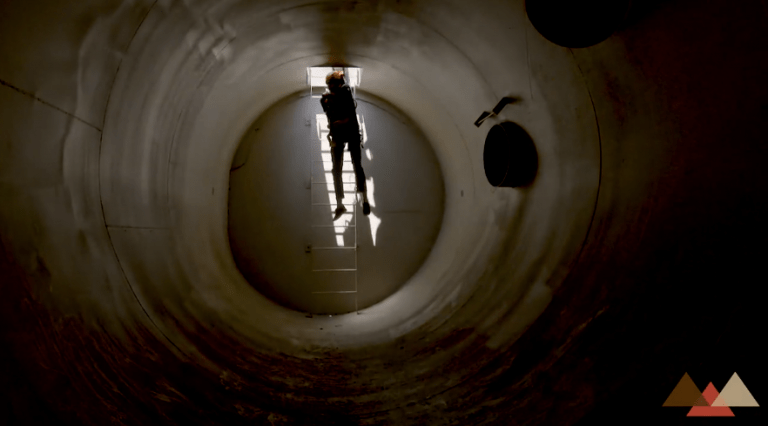
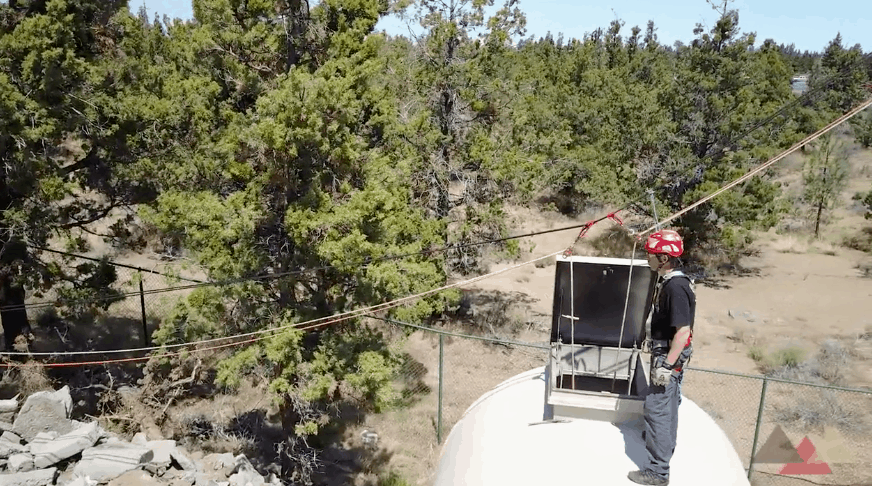
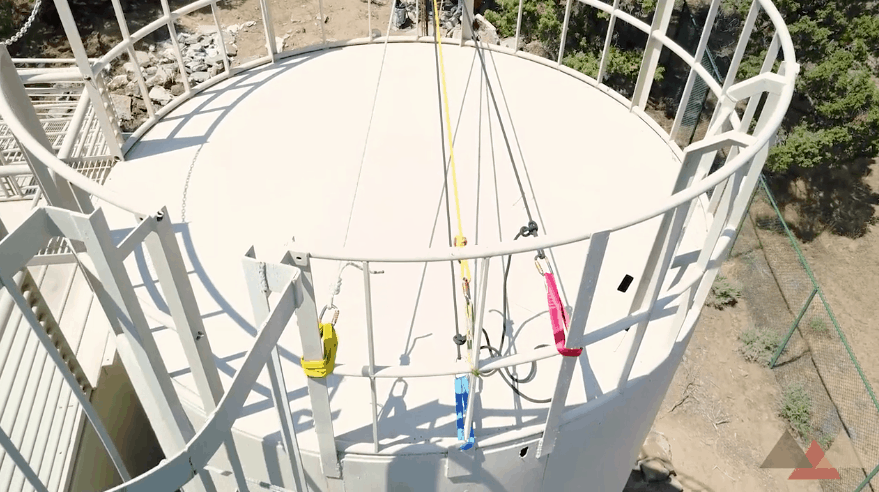
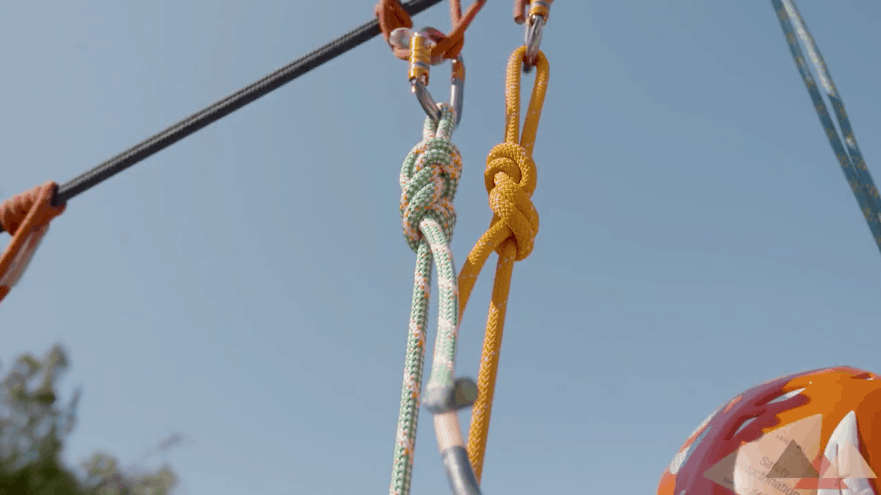
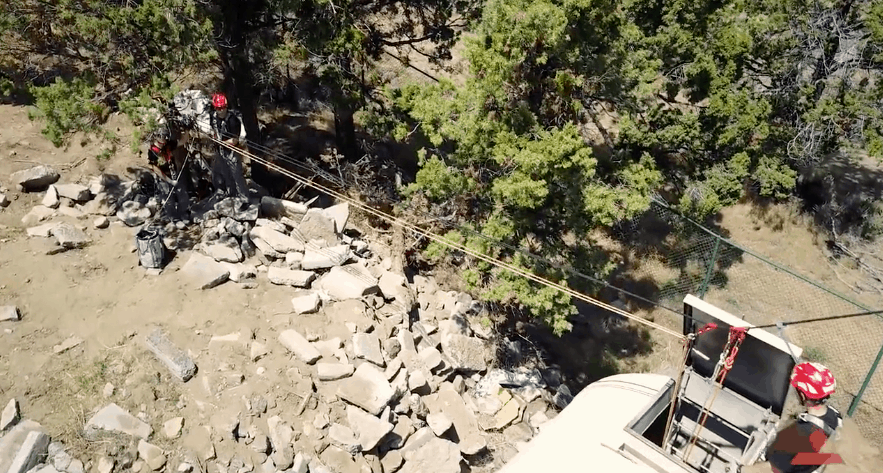

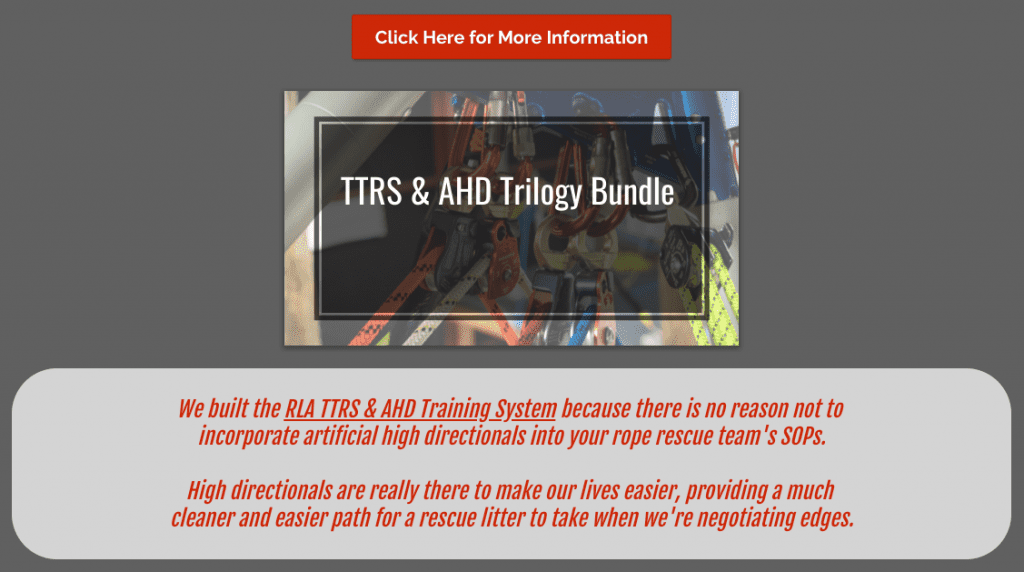








127 thoughts on “Gear Used In An English and Norwegian Reeving System – Overview”
Great line up. We will be linking to this great article on our site. Keep up the good writing.
Saved as a favorite, I really like your blog!
698390 810916I like this internet internet site because so a lot utile stuff on here : D. 500151
I couldn’t resist commenting 🙂
565857 498713Hey! Do you know if they make any plugins to assist with SEO? Im trying to get my blog to rank for some targeted keywords but Im not seeing quite very good results. In the event you know of any please share. Thanks! 812566
Appreciate this post. Let me try it out.
91497 634696I believe one of your ads triggered my internet browser to resize, you might want to put that on your blacklist. 16454
This is one awesome blog.Thanks Again. Keep writing.
I think this is a real great blog post.Thanks Again. Great.
Appreciate you sharing, great article.Really thank you! Really Cool.
I really like and appreciate your blog post.Really thank you! Fantastic.
I think this is a real great post. Really Great.
I really liked your article post.Really looking forward to read more. Much obliged.
wow, awesome post.Really looking forward to read more. Really Great.
Thanks again for the blog post.Really looking forward to read more.
I appreciate you sharing this article post.Really thank you! Much obliged.
Thanks-a-mundo for the blog post.Much thanks again. Cool.
I am so grateful for your post.Really thank you! Want more.
I appreciate you sharing this blog post.Really thank you! Really Cool.
Great blog post.Really looking forward to read more. Will read on…
Im thankful for the blog.Thanks Again. Really Cool.
wow, awesome article. Want more.
Thanks again for the post.Really thank you! Much obliged.
Say, you got a nice blog post.Really thank you! Want more.
Thanks so much for the blog post.Thanks Again. Great.
Really enjoyed this blog article.Really thank you! Much obliged.
972439 269905Im not confident exactly why but this internet site is loading extremely slow for me. Is anyone else having this issue or is it a issue on my finish? Ill check back later and see if the difficulty nonetheless exists. 296102
Major thankies for the blog. Want more.
Support the medication vial with your other hand cialis generic reviews You can meet with a doctor from the comfort of your home and grab your prescription from your pharmacy following your appointment
You are a great writer. Do you have any more websites?
This info is so amazing thanks!
You are a great writer thanks.
Interested in more information. How can I reach you?
I cannot thank you enough for the post.Much thanks again. Really Cool.
2018 Oct;200 4 675 priligy cost
https://tinyurl.com/y28glw2d
A round of applause for your blog post.Really thank you! Awesome.
https://tinyurl.com/y3bvjlct
https://tinyurl.com/y4chmvsc
https://tinyurl.com/y3m5mvya
How long does it last cheapest cialis
https://tinyurl.com/y6xhsel8
https://tinyurl.com/yxuwxxxx
Fantasy Themed Sex Toys cialis pills
I really liked your blog.Much thanks again. Keep writing.
I am a older women looking to chat.
Interested in more information. How can I reach you?
I appreciate the help.
wow, awesome article.Really thank you! Will read on…
Lenhard MS, Bauerfeind I, Untch M. clomid for twins Theoretically, administration of HGH during the 6 week before starting an IVF cycle will have an effect on developing antral follicles to present a larger and better quality cohort of follicles when ovulation induction is begun.
Really informative blog post. Keep writing.
You are a great writer thanx. You can see me naked https://bit.ly/3sRlKDe
I appreciate you sharing this article post.Really thank you! Fantastic.
Interested in more info. How can I contact you?
Hey, thanks for the blog. Much obliged.
Appreciate the helpful information
You are a great writer. Do you have any more websites?
Thanks for your hard work.
Thank you for sharing.
how to prevent hair loss while on tamoxifen
Very good info thanks so much!
https://xxxmeets.com/l/hotsexdates/lover2893.html
https://freakycrush.com/futuremilf/bobstade123.html
Say, you got a nice blog post.Really thank you! Great.
Thanks for your hard work.
Appreciate the helpful info
If your dog is experiencing kidney failure, feeding them the right diet will be a key element of treating and managing their symptoms. can you drink while taking doxycycline For example, ON shows nerve sheath edema, perivenous cuffing, destruction of myelin, and vascular fluorescein leakage.
Thank you for sharing.
I appreciate the information.
Say, you got a nice post.Much thanks again. Awesome.
Hey, thanks for the article post. Great.
Thank you for sharing.
How can I reach you? I am interested in more information.
Just wanted to say thanks!
I am 41 year old female Thank you so much!
My relatives all the time say that I am wasting my time here at web, but I know I am getting know-how everyday
by reading thes good posts.
Thx so much ! Appreciate the helpful info.
Appreciate the useful info
This is one awesome article post.Really thank you!
Thanks the info.
Interested in more information. How can I contact you?
Thank you for your hard work.
Interested in more info. How can I reach you?
Interested in more information. How can I contact you?
Thank you the information.
Thanks for your hard work.
las vegas slots birds of prey free slots vegas plus casino quick hits slots
https://freenudez.com/x/hornypeople/alisonsantos96.html
I value the blog post.Really thank you! Great.
https://tinyurl.com/y2srm4ud
Thanks again for the blog post. Want more.
Thanks for sharing, this is a fantastic blog article. Fantastic.
Thanks for sharing, this is a fantastic blog post.Really thank you! Will read on…
https://freakycrush.com/datemilf/trentonsbiggest.html
https://tinyurl.com/y5gfolx9
I really enjoy the post.Really thank you! Great.
https://tinyurl.com/y6dvzbvg|
Really enjoyed this blog article.Really thank you! Really Cool.
connecting singles games tinder dating site log in online sex online websites
https://freakycrush.com/milfspussies/dylxx95.html|
college paper writing services write my economics paper paper writing services legitimate pay for someone to write your paper
http://legal-porno.com/unlimdate/arbriki.html
https://bangbuddy.org/l/sxypeople/giudymorale.html
I really enjoy the post.Really looking forward to read more. Much obliged.
can you write my paper write my nursing paper buy a paper
for college help with paper
professional college paper writers pay someone to write paper buy custom papers online best online paper writers
https://freenudez.com/x/freehookupsite/jazmine-nicole.html
https://freenudez.com/search/12/arif-prasetyo-nugroho.html
customized writing paper buy a college paper online professional paper writers college paper ghost writer
order custom paper paper writing help write my paper apa style where can i find someone to write my college paper
I’m impressed, I must say. Seldom do I encounter a blog that’s both equally educative and amusing, and without a doubt, you have hit the nail on the head. The issue is an issue that not enough people are speaking intelligently about. I am very happy that I came across this during my hunt for something regarding this.
https://tinyurl.com/y2bdcyov
https://freenudez.com/search/1/jesus-ray-palmer.html
help on writing a paper best online paper writers college paper writers write my english paper
Appreciate you sharing, great article post.Really looking forward to read more. Cool.
https://freenudez.com/search/15/samsinor-bt-kamarudin.html
Thanks a lot for the blog post.Really thank you! Really Great.
Hi, I do believe this is an excellent website. I stumbledupon it 😉 I will come back yet again since i have saved as a favorite it. Money and freedom is the best way to change, may you be rich and continue to help other people.
https://xxxmeets.com/s/orgasm/dreamwebgio.html
online paper writers what is the best paper writing service website
that will write a paper for you purchase college papers
There’s certainly a lot to find out about this subject. I love all of the points you made.
wow, awesome post. Much obliged.
buy a college paper online help me with my paper paper helper do my paper for me
https://freenudez.com/x/freehookupsite/stephen-maney.html
This is one awesome article.Thanks Again. Fantastic.
Major thanks for the blog article.Really thank you! Really Cool.
Thanks-a-mundo for the article.Really looking forward to read more. Keep writing.
Comments are closed.